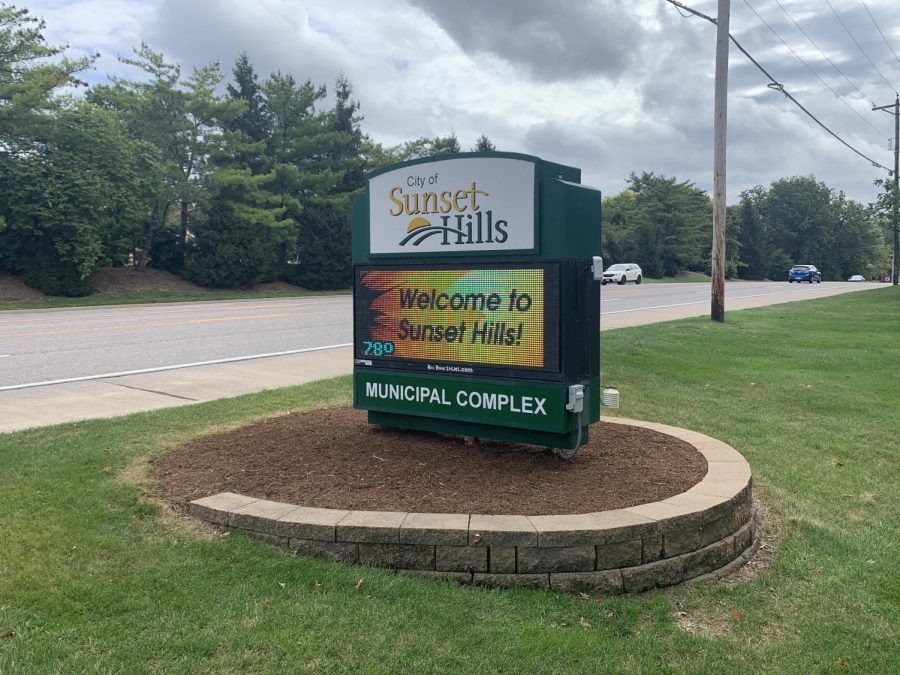South county lawmakers are not celebrating the passage of a new state formula for funding education, though the effort is drawing praises from Republican Gov. Matt Blunt.
And one local school official calls the measure the “single biggest tax problem” facing south county.
The Mehlville School District would draw an additional $6.65 million over the next nine years, according to funding simulations released by the Missouri Department of Elementary and Secondary Education.
The Lindbergh School District will receive roughly $271,065 over the same period.
“It’s peanuts,” said Rep. Jim Lembke, R-Lemay. “It’s a very, very small amount.
“Mehlville is going to benefit the most, but it’s still a dismal percentage (of income tax) that will come back from the formula,” he told the Call. “Currently, they get $8.9 million per year. By 2014, they’ll be getting $15.6 million. At least they’re getting the scraps that fall off the table.”
“If you multiply (that $6.7 million increase) out, it’s a lot less than 1 percent of Mehlville’s total expenditures,” said Rep. Walt Bivins, R-Oakville. “I know there’s only so much money to go around but I felt the way it was distributed left us out in the cold again.”
Lembke, Bivins and Rep. Jim Avery, R-Crestwood, were three of only six Republicans to vote against the proposal. They say the plan doesn’t relieve local taxpayers, who still will be asked to foot the bill to fund education.
“When you take schools like Lindbergh and Mehlville that for the last nine years, 80 to 85 percent of their revenue comes from the local taxes compared to statewide it’s more like 45 to 50 percent, it shows how inequitable state funding is,” Lembke said.
“There was nothing in it for the urban schools,” Avery said. “It’s an additional $28,000 per year for the next eight years (for Lindbergh). That’s about as low as you can go without hitting zero. It was a bad deal for the Lindbergh School district. I just think we rushed through this. There’s going to be some tweaking done to it next year, I’m sure. It’s been a frustrating process.”
Officials at Mehlville and Lindbergh aren’t impressed either.
“The question is are taxpayers getting a fair return on their income tax dollars? I don’t think they are.” Lindbergh Chief Fi-nancial Officer Pat Lanane told the Call. “From the taxpayers’ perspective, even though they don’t know it, it is the single big-gest tax problem they’ve got.”
Lindbergh has discussed asking voters again for a tax-rate increase and that seems more inevitable knowing the district will get little from the state. The $271,065 increase will be distributed in $90,000-increments for the first three years. After that, no new money will go to Lindbergh. Funding will be frozen because Lind-bergh will remain hold-harmless under the new formula.
“I could buy one computer-printer ink cartridge per student with the money I’m getting,” said Lanane, also assistant superintendent for finance. “I’m probably being generous because I could probably only buy one ink cartridge for every two students. Thanks governor.”
Mehlville will no longer be a hold-harmless district, meaning its state aid could increase annually, but Superintendent Tim Ricker isn’t counting on it.
“At this point in time, there’s the bad news and the good news. So I always like to end with good news, so I’ll start with the bad news,” Ricker told Board of Education members last week. “The bad news is there’s no earmarked funding mechanism for public education for the next seven years based on this formula. It’s money that’s on the come. It’s money on increased economics. It’s money on efficiencies and the downsizing of government. At least that’s what the governor and others said. So as we look at this, whatever comes out of this, it’s money that’s not yet in the coffers of the state of Missouri.”
He continued, “The other bad news is that the performance levy that we worked so hard for to be at $3.35 is at $3.43. The other bad news is there’s all kind of simulations coming out of Jeff City from all over the place and I don’t believe any of them are accurate and so I would hesitate on looking at any simulation even through the press at this point in time as to whether it’s accurate or not. I’m willing to wait on the accuracy of simulations coming from the Department of Elementary and Secondary Education because they’re really the only ones who know how that funding mechanism works.
“The last part of the bad news, although it’s a bad-good-news scenario, the language that we worked so hard on in looking at assessment practices throughout the state, while the bill does include a study of assessment practices, which we think that’s good. It only indicates that that assessment study will begin in Jan-uary and be done by June of next year, which the bad news is whatever the news comes out of that, you’ve missed a legislative session. So you’re two years down the road to do anything, if they do anything at all because the teeth part of that was taken out, OK?”
“Let’s go back to good news. The good news is the 1.15 dollar value modifier was left in. Obviously we had great representation from our representatives, Rep. Lembke, Rep. Bivins, Rep. (Sue) Schoemehl, and great representation by Sen. (Harry) Kennedy. They fought hard for our interests and, in many cases, it was against their own party and party leadership. And we need to remember that, that they represented us well. They fought very hard for a higher dollar value modifier. They fought very hard for the needs of our school district and for the needs of our community,” he said.
The performance levy Ricker referred to is used to calculate local effort and distribute aid accordingly; school districts are rewarded for raising a certain amount of revenue from property taxes. Because assessments are much higher in St. Louis County than out-state Missouri, smaller levies generate more revenue so the performance levy doesn’t adequately calculate how much money local property taxpayers give their schools.
“The higher that number, the worse it is for our community,” Bivins said. “It discounts the local effort and we have a fairly high local effort.”
And assessments are faulty in the first place, according to south county representation. Because many out-state assessors are elected, not appointed, property assessments are lower, school districts look poorer and the state sends more education money out-state.
The new formula is designed to shift Missouri from a tax-based formula to a student-needs based formula, but students’ needs are determined, in part, by local tax revenue. They’re also determined by the number of special-needs students, like those on the free-and-reduced lunch program or those who speak English as a second language.
The formula contains a provision requiring a statewide assessment study, but it doesn’t mandate assessments increases if they’re found to be low.
“There’s not anything there on paper that tells me: ‘This will fix the (assessment) problem,'” Lanane said.
The dollar-value modifier, or DVM, is designed to account for the higher cost of living in urban areas versus rural Missouri, but south county lawmakers say it is too low. The DVM is set at 15 percent, meaning $1.15 in some urban areas is worth $1 in parts of out-state.
Lanane said the DVM would have to be about 40 percent for Lindbergh to see additional state revenue.
Finally, the plan intends to pump an additional $800 million into education, but no one knows where to get the money.
“We still don’t have a funding mechanism in place so that’s a big concern of mine,” said Schoemehl, D-Oakville, who also voted against the measure.
“Our community in St. Louis County is in a tough spot,” she told the Call. “There was a tremendous amount of amendments yet to be presented. I believe there was an enormous pressure from the leaders and from the governor’s office because of the lawsuit to get this finished.”
More than 250 school districts, including Lindbergh and Mehl-ville, are part of a lawsuit contending the current formula is un-constitutional because it is inadequately funded and inequitably distributed. It appears that lawsuit will carry over to the new formula, which takes effect in the 2006-07 school year.
And the courts may be the only savior for Lindbergh and Mehl-ville because as far as the Legislature is concerned, the problem is solved because a new formula has been approved, Lembke said.
“The only thing that would resurrect it is if the school districts continue with their lawsuit and the courts would force the hand of the Legislature,” Lembke said.
“I don’t see how the school districts in St. Louis County have any choice now,” Bivins said of pressing with the lawsuit. “I don’t think there’s going to be any appetite (for lawmakers) to revisit this formula.”
The governor, however, said the new formula is fair for all.
“This needs-based formula strikes the right balance between rural and urban school districts and can be fully funded with revenues derived from reasonable economic growth,” Blunt stated in a news release. “This is the right approach. We need a formula focused on the needs of a Missouri school child, not on a formula based on the taxing capacity of the school district.”
“It’s not correct to say this is student-needs driven,” Lanane said. “I would say half of it is based on student-needs.”
As far improving education funding beyond the new formula, Lembke suggested a statewide referendum asking voters to fund education with a flat income tax, removing some of the burden off property taxes.
“I think we should look at a flat income tax,” he said. “Some type of dedicated income tax to fund public education. That will be more equitably distributed across the tax base. It will allow us probably in our area to cut property taxes as much as 80 percent.”




















